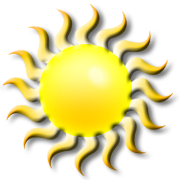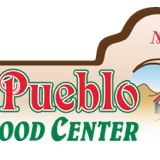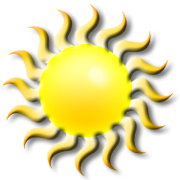Information
-
Audit Title
-
Client / Site
-
Conducted on
-
Prepared by
-
P = Priority (-15%); PF = Priority Foundation (-5%); C - Core (-1.5%)
GENERAL
-
C 505. Evidence of current Food Manager Certification is provided for all employees as legally required.
-
C 507. Foodborne Illness Complaint Sign is posted by the phone.
CHEMICALS / CLEANING
-
C 301. All cleaning and sanitizing chemicals are USDA/FDA approved and properly used in accordance with label instructions. MSDS sheets are provided for all chemicals used. No use of off the shelf chemicals is permitted. Allowed chemicals Non-Scented Bleach, Goo Gone, Rubbing Alcohol.
-
P 303. All toxic chemicals are properly stored in an area separate from food, equipment, utensils and single service items.
-
C 302. All spray bottles are properly labeled as to contents and used only for the purpose intended.
-
PF 311. Sanitizer/Produce Fresh concentrations (buckets/sinks/spray bottles). Employees understand and practice proper sanitization procedures. All employees know how to mix and use sanitizer/produce fresh and test for proper concentration of sanitizer/produce fresh in the utensil washing sinks (two or three compartment). The appropriate test strips and/or chemical testing kits are readily available.
-
Confirm that the chemicals are the proper concentration.
Test Results
-
Sanitizer Concentration:
-
Produce Fresh Concentration:
-
Chlorine Concentration (dishwashers):
-
SaniSave Concentration:
-
C 313. Sinks (2 or 3 part) for cleaning and sanitizing are clean, functioning properly with hot and cold running water, drain plugs are provided.
-
C 309. In-use wiping cloths for counters and other equipment surfaces are clean and stored in sanitizer solution when not in use.
-
C 307. Sanitizer/Cleaning buckets are properly stored off of the floor and in a manner to prevent contamination of food, equipment, single use items, linens, etc. Buckets are adequate in number.
-
C 910. All mop water is properly disposed in service sink or mop sink.
-
C 904. All cleaning supplies and equipment are clean and properly stored. Hoses, mops, brooms, etc. are stored off of the floor when not in use.
-
PF 901. A sanitation schedule is present and followed daily. Sanitation logs are present and up to date for all equipment, floors, floor drains, walls, ceilings, etc.
HOUSEKEEPING / STORAGE
-
C 920. Exhaust hoods are installed where required, and functioning properly. Hoods and filters are clean and serviced on a regular schedule. All equipment is properly placed under exhaust hoods (if required) and hoods are in operation when equipment is in use.
-
C 611. Walls & ceilings are in good repair and clean with no holes, rust, flaking paint, cracking or dripping.
-
C 926. Lighting is adequate and all lights are clean and properly shielded or shatterproof.
-
C 915. Condensers, overhead fans, overhead pipes and sprinkler heads are clean and free of debris or leaks.
-
C 922. Floors are in good repair and easily cleaned. No debris on the floor. Floor wall junctures are properly coved with coving in good repair and sealed.
-
C 907. All floor drains are clean and functioning properly; floors and floor drains are free of standing water.
-
C 923. Grease traps are clean, functioning properly and regularly maintained.
-
C 937. Walk-In Coolers: walls, floors, ceiling, shelving: clean, dry, odor-free, no standing water.
-
C 935. Trash cans are provided; clean and well maintained, and not touching product or product contact surfaces.
-
C 930. Deli prep area is neat, clean & well organized. No unnecessary items present such as cardboard, boxes or unused equipment.
-
C 911. All packaging material and supplies such as foam trays, wrapping materials, etc. are properly stored to prevent contamination. Supplies are elevated 6" off of the floor. Storage shelves are clean.
-
C 908. All food is properly stored at least 6" above the floor and stored in such a manner as to prevent contamination. Storage shelves are clean.
-
C 401. All employee personal items are properly stored in designated areas. No personal food or beverages allowed in food storage or prep areas.
-
C 510. Pest control devices are properly installed and maintained. Insect lights are not installed above food preparation or open storage areas.
-
P 509. No evidence of rodents or other pests in the facility.
LOGS
-
PF 312. Sanitizer/Produce Fresh Concentration on PRODUCTION LOG is present and up to date. Corrective action is documented when necessary.
-
PF 701. Thermometer Calibration found on PRODUCTION LOG is present and up to date. Corrective action is documented when necessary.
-
PF 703. Cooking Temperatures found on PRODUCTION LOG for hot holding of potentially hazardous foods in display cases and on buffets. Temperatures are taken for every batch of product made using a probe thermometer. Log book is available, complete, up to date, dated and initialed. Corrective action is documented when necessary.
-
PF 706. Hot Case Temperatures found on PRODUCTION LOG is kept for hot holding of potentially hazardous foods in display cases and on buffets. Temperatures are taken at least every 2 hours. Log book is available, complete, up to date, dated and initialed. Corrective action is documented when necessary.
-
PF 702. Chicken Temperatures found on PRODUCTION LOG for hot holding of potentially hazardous foods in display cases and on buffets. Temperatures are taken for every batch of product made using a probe thermometer. Log book is available, complete, up to date, dated and initialed. Corrective action is documented when necessary.
-
PF 705. Cooling Verification Log: Log is maintained, available, complete, up to date, dated and initialed. Corrective action is documented when necessary. Corrective action is documented when necessary.
-
PF 715. Sampling Log present and up to date. Corrective action is documented when necessary.
-
C 710. Salad Log present and up to date. Corrective action is documented when necessary.
-
PF 708. Salad Bar Log present and up to date. Corrective action is documented when necessary.
-
PF 709. Salad Bar Temperature Log present and up to date. Corrective action is documented when necessary.
-
PF 712. Cooler Temperature Log present and up to date for all units that don't have electronic monitoring. Corrective action is documented when necessary.
-
PF 601. Employee Illness Log filled out. Corrective action is documented when necessary.
-
C 000 Catering Records: is the department catering or supplying meals to outside venues? Is documentation available for tracking this product? Corrective action is documented when necessary.
FOOD CONTACT SURFACES / FOOD HANDLING
-
C 931. Deli Receiving (if applicable): Product condition and temperature are checked and recorded upon receipt. Records are kept on file and supported by rejection processes.
-
PF 1008. Thermometers are provided for monitoring of food temperatures. Thermometers must be calibrated (+/- 2°F) and properly sanitized.
-
Did you observe or conduct thermometer calibration?
-
P 1002. All potentially hazardous foods are cooked to the proper temperatures and measured using a sanitized, calibrated stem thermometer. All employees know how to take and record temperatures.
-
P 705a. Hot foods are appropriately cooled from 140°F to 70°F within the first 2 hours and then cooled from 70°F to less than 41°F within an additional 4 hours. Employees utilize proper cooling methods such as ice baths, shallow pans, etc.
-
PF 1007. Thawing of potentially hazardous foods is only done by approved methods such as under refrigeration; under running water; in a microwave oven or as part of the cooking process.
-
C 1005. No evidence of temperature abuse on refrigerated or frozen products such as excessive ice inside packaging, discolored product, freezer burn, etc.
-
P 1003. All potentially hazardous foods throughout the department including those in display cases, prep areas, coolers, walk-in boxes, salad bars, buffets, etc. are maintained at the proper temperatures; refrigerated foods at 41°F or below; frozen foods at 0°F or below and hot foods at 140°F or higher. (Samples can utilize TPHC).
-
Monitor and record temperatures:
Product Temperatures:
-
Case / Station:
-
Product Temperature(s):
-
PF 803. All food products throughout the deli department, including display cases, refrigeration units, storage areas, etc. are properly stored to prevent contamination. All open product is properly protected, with no potential for cross contamination between raw and cooked or RTE items. (i.e. fans, cardboard boxes, condenser units, improper stacking order, etc).
-
PF 933. Single service items and all exposed food on salad bars and buffets are properly protected from contamination (inadvertent and/or deliberate).
-
PF 714. Utensils for customer self service on salad bars, buffets, and demos are provided and properly stored.
-
PF 308. In-use utensils are properly stored-in the food product with handles exposed; on a clean & sanitized portion of the work surface; under running water or in a clean container of water maintained at 135°F or higher.
-
C 310. Prep tables and work surfaces cleaned and sanitized as often as necessary; work surfaces are in good condition and easily cleanable.
-
PF 314. Surfaces of food contact equipment and utensils are properly washed, rinsed and sanitized throughout the day (when in use) at a frequency of at least every 4 hours and sanitized before start-up.
-
PF 305. Equipment is properly washed, rinsed and sanitized between uses. Non-portable equipment is broken down and sanitized daily or as often as necessary.
-
PF 304. Cleaned and sanitized equipment is stored in a manner to prevent contamination. Small wares, pans and other equipment should be stored inverted at least 6" off the floor.
-
C 906. All equipment is of commercial grade (NSF listed or the equivalent) in good condition, functioning properly and easily cleanable.
-
P 315. Produce Fresh: raw foods, including fruits and vegetables are properly washed prior to preparation.
-
P 808. No evidence of cross contamination between raw and RTE items (dripping).
-
P 805. Bare hand contact with RTE is prohibited and employees are observed using suitable utensils such as deli tissue, spatulas, tongs, single use gloves or other dispensing equipment. If single use gloves are provided, personnel are instructed as to proper glove use and are observed using gloves correctly.
-
PF 805. Other deviations from glove policy (including fake nails, nail polish, bandaids, etc)
PERSONAL HYGIENE / HANDWASHING
-
P 601a. Food handlers have no obvious signs of illness or open wounds on hands.
-
PF 602. Employees are practicing proper hand washing procedures.
-
C 603. Handwashing signs are posted above all hand sinks in restrooms and food preparation areas.
-
PF 604. Handwashing sinks are adequate in number and easily accessible in all food preparation areas. All sinks have hot and cold (or tempered) running water and are properly stocked with soap, disposable towels and trash cans and handwashing instructions. Splash guards are present where needed.
-
C 610. Staff: Clean, well groomed appearance. Clean protective clothing such as uniforms and aprons are worn when required. Aprons and other protective clothing are removed before going to restrooms or on break and stored in a sanitary manner.
-
C 607. Staff in open food areas or food handling areas are prohibited from wearing jewelry except plain wedding bands or if wedding rings are set with stones, a glove must be worn AT ALL TIMES to cover the stones.
-
C 608. Staff in open food or food handling areas are properly wearing hair restraints.
-
PF 606. Staff Attire when handing raw food (meats): A plastic apron, gloves and sleeve guards must be worn when handling/preparing raw food (i.e. chicken, meatloaf, etc.)
-
C 609. Staff is prohibited from eating and drinking, except in designated areas.
-
C 512. Unauthorized personnel, including off duty personnel are following proper food practices (i.e. wearing hair net) while in back areas, food preparation & storage areas and other sensitive areas of the facility. Proper signage is present indicating restricted areas.
-
C 605. Personnel have completed Coborn's online food safety training course.
ALLERGENS
-
C 102. Food handlers are knowledgeable of the "Big 8" allergens of concern (eggs, soy, milk, peanuts, tree nuts, fish, shellfish & wheat). <br>
-
C 101. Adequate precautions are taken to reduce or eliminate the chance of cross contamination between allergens and other ingredients during food preparation, storage and handling. Signs are posted & visible.
-
C 103. Staff is trained to recognize the symptoms of an allergic reaction and to call for emergency help if observed.
ROTATION / DATING / LABELING
-
C 811. Packaged food shall be labeled correctly (i.e. ingredients, Net weight, Allergens, Address (City, State, Zip)).
-
PF 807. First In First Out (FIFO). Product is rotated properly. No out of date or expired product is observed.
-
Record product information:
Outdated Product
-
Record product information:
Outdated Product
-
C 802. All boxes and containers are marked and dated with receipt date.
-
P 801. Date marking system: all opened potentially hazardous RTE products must be clearly marked with the open date and the date by which the food shall be consumed on the premises, sold or discarded, which must be within 7 days, not to exceed the original manufacturer's use by date. The day the product is made or opened is considered to be day one. If any PH ingredient is used in another product, the preparation date must correspond with the earliest prepared ingredient. (ex. adding chicken to salad).
-
C 810. Non-Potentially Hazardous foods (spices, nuts, etc.) must be labeled & dated when opened. Products that require use-by-dates are adequately dated.
DISPLAY CASES
-
PF 1004. Display cases are properly stocked with no product above the fill line or stored on air vents.
-
PF 1001. All display cases (refrigeration and frozen) are functioning properly. Refrigerated cases 41°F or below; frozen cases 0°F or below or cold enough to keep product frozen solid. Thermometers are designed for use in refrigerated units.
-
C 916. Display cases are clean outside and inside, including hard to clean areas; no mold or other unsanitary conditions; signs, tags, and tag channels are clean and orderly.
-
C 917. Display cases are of commercial construction (NSF listed or equivalent), and are in good condition: No dents, damage, rust or peeling paint.
-
C 902. All buffets and salad bars are of commercial construction (NSF listed or equivalent), clean, and properly installed and maintained. Sneeze guards are present.
-
C 934. Soda machines and other beverage dispensing equipment is of commercial grade (NSF listed or equivalent); clean, properly installed and maintained; dispensing nozzles are clean.
-
C 921. Floor between and under display cases is clean.
SWABS
-
Swab 1 - Deli Slicer
-
Specify which slicer, and what area of the slicer:
-
Swab 2
-
Area Swabbed:
-
Swab 3
-
Area Swabbed:
-
Swab 4
-
Area Swabbed:
-
Swab 5
-
Area Swabbed:
-
Swab 6
-
Area Swabbed:
-
Swab 7
-
Area Swabbed:
-
Swab 8
-
Area Swabbed:
REVIEW & SIGNATURE
-
Signature of Auditor
-
Signature of PIC











